
Last week, I brought you a unique behind-the-scenes look at the process Nakai-san follows when he’s starting to create a new wide-body RWB conversion – in this case a first kit for the Porsche 997. In that story, Nakai dipped his fingers into resin and layered strips of glass fiber onto the rear arches.
This follow-up has us fast forwarding a good six months. It was summer 2019, and the 997 project had been put on the back burner as Nakai went about completing customer builds all around the world.

If I remember rightly, that would have been over 60 cars, so you can understand why the 997 kit wasn’t Nakai-san’s first priority.

That said, when I met him next things had really progressed.

The rear fenders we saw him working on during the first visit had been joined by some fronts. It seems like Nakai-san used his downtime in between international builds well.

The rear fenders had also visibly grown in size thanks to multiple layers of body filler, which had been applied liberally on top of the FRP flares and the glass fiber we saw Nakai lay down.

As Nakai put it, what I was about to see was probably going to be the most enjoyable part of the whole process – the actual shaping.
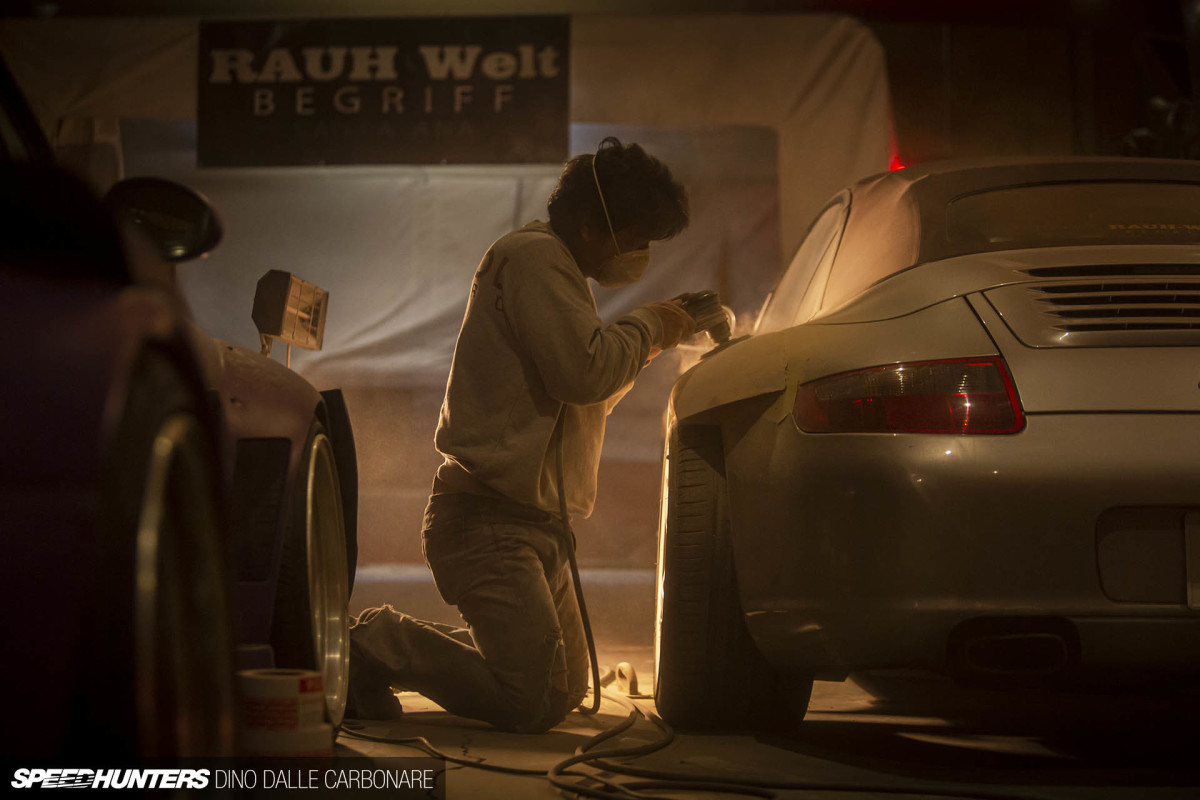
This is where the ideas Nakai-san had been cultivating in his head would come to life in 3D form.

As Nakai attacked each over-fender with an air-powered disc sander and smoothed down the surface, you could slowly see the shape become more refined.

He would do a few passes and then blow all the dust away with an air gun to reveal a smoother and more contoured profile.

Before hitting the front fenders with the sanding disk, Nakai did a few rough passes with a grater tool to eat away at more of the filler thickness in areas that needed it.
The disc sander was pulled out again.
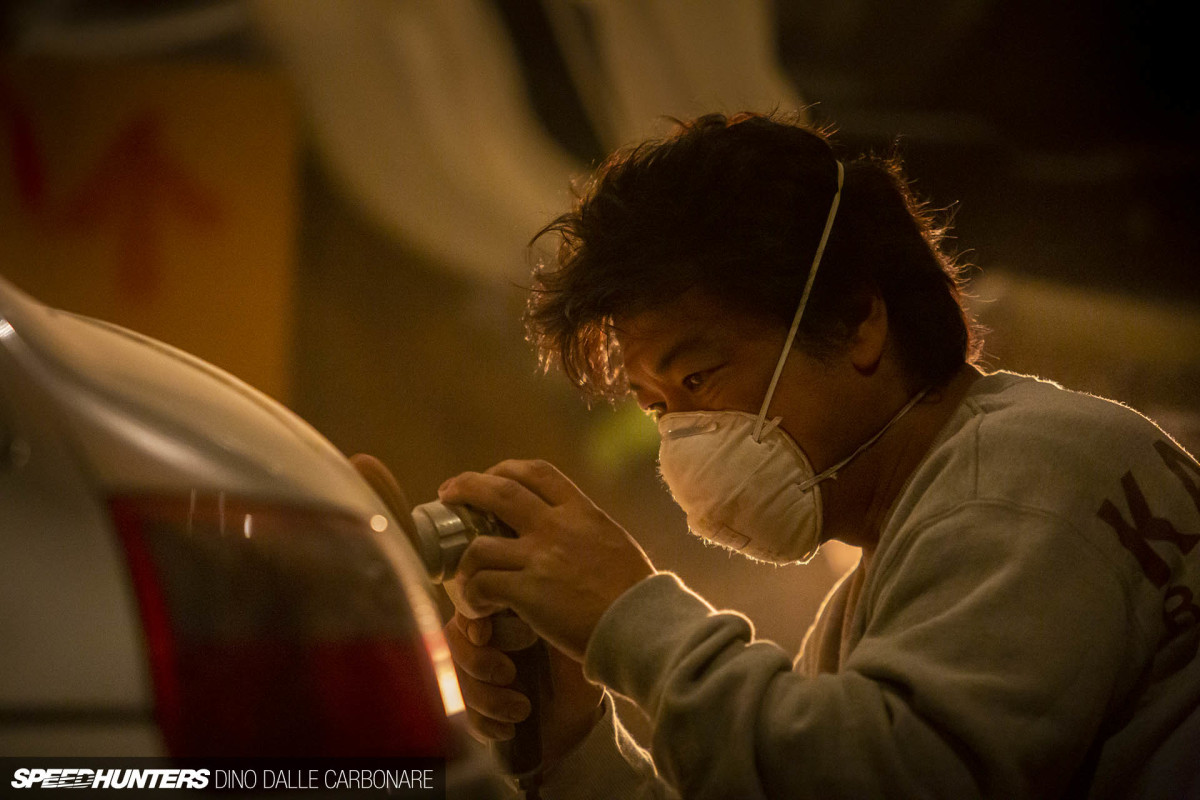
It was a loud process, so I could only observe and take pictures as Nakai continued.
He’d often stop and run his fingertips over the section he had just smoothed and shaped, slowly sculpting the overall curve that he was going for.

I thought it was very cool how tactile this process is. Nakai-san’s creativity was being expressed in a way that I had not seen in person before.

In some areas he took off so much material that the underlying metal structure showed through. He told me that he would continue to layer on body filler where he thought he might need to refine the shape, and then shape some more.

After a few hours of work the rear fenders that looked so out of place months back seemed to naturally flow off the 997’s factory lines.

There was now a more defined curvature and a visible edge.

Not that Nakai was done by this point, mind you. It was just a moment in time that I had a chance to drop by and observe another important stage of the process.
It would take many more months of work for Nakai to find a shape he was truly happy with. And even then – as he said – it will continue to evolve. The idea was to begin with one initial 997 wide-body conversion, and then see how he could expand on it. Think wider, wilder and rougher.

It was great to be able to bring you this unique view into a process that no one usually gets to see.
Stay tuned for the third and final instalment, where I’ll show you the finished product(s) and share a few more insights into RWB’s 997 conversion.
Dino Dalle Carbonare
Instagram: dino_dalle_carbonare
dino@speedhunters.com


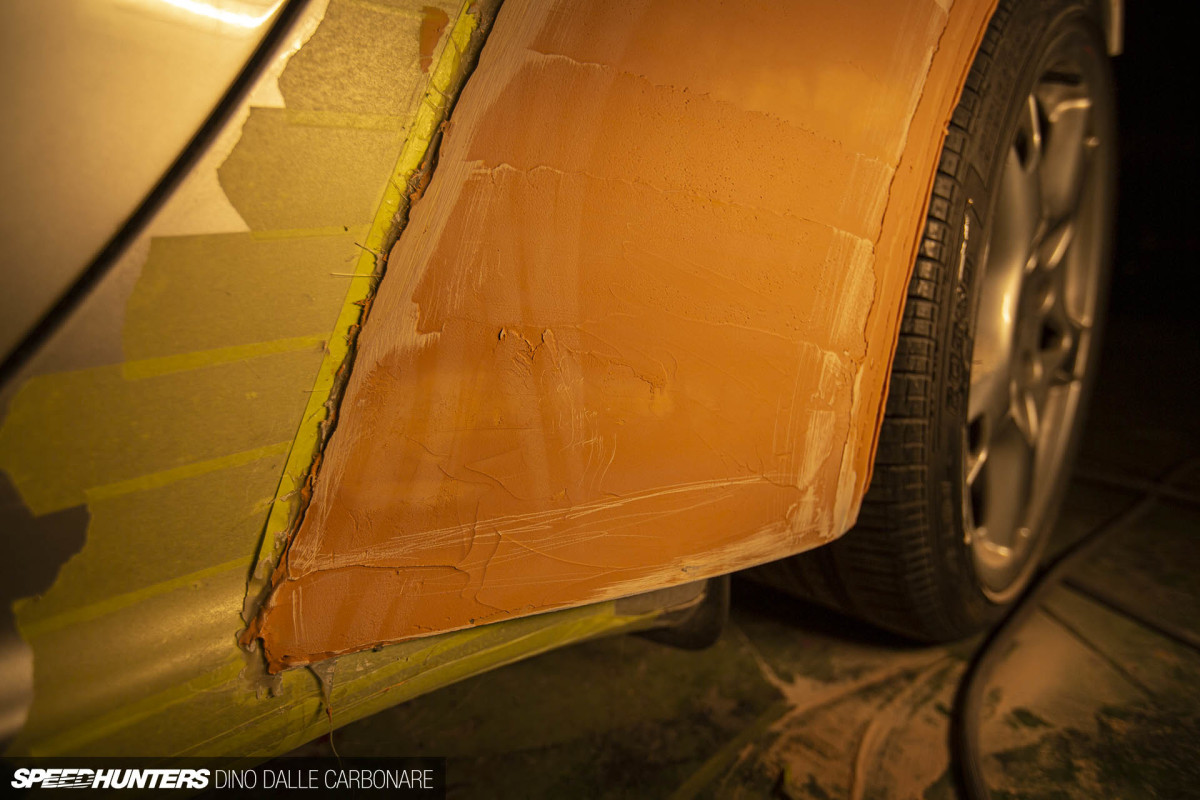
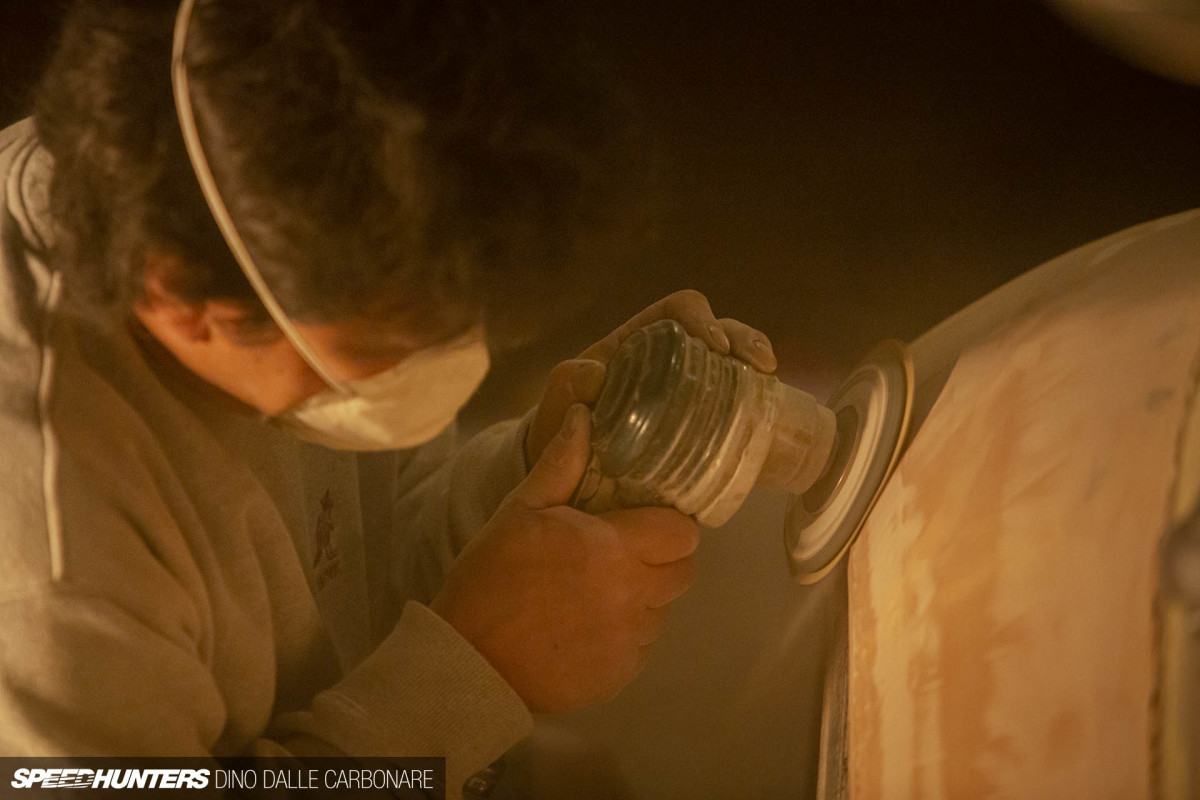


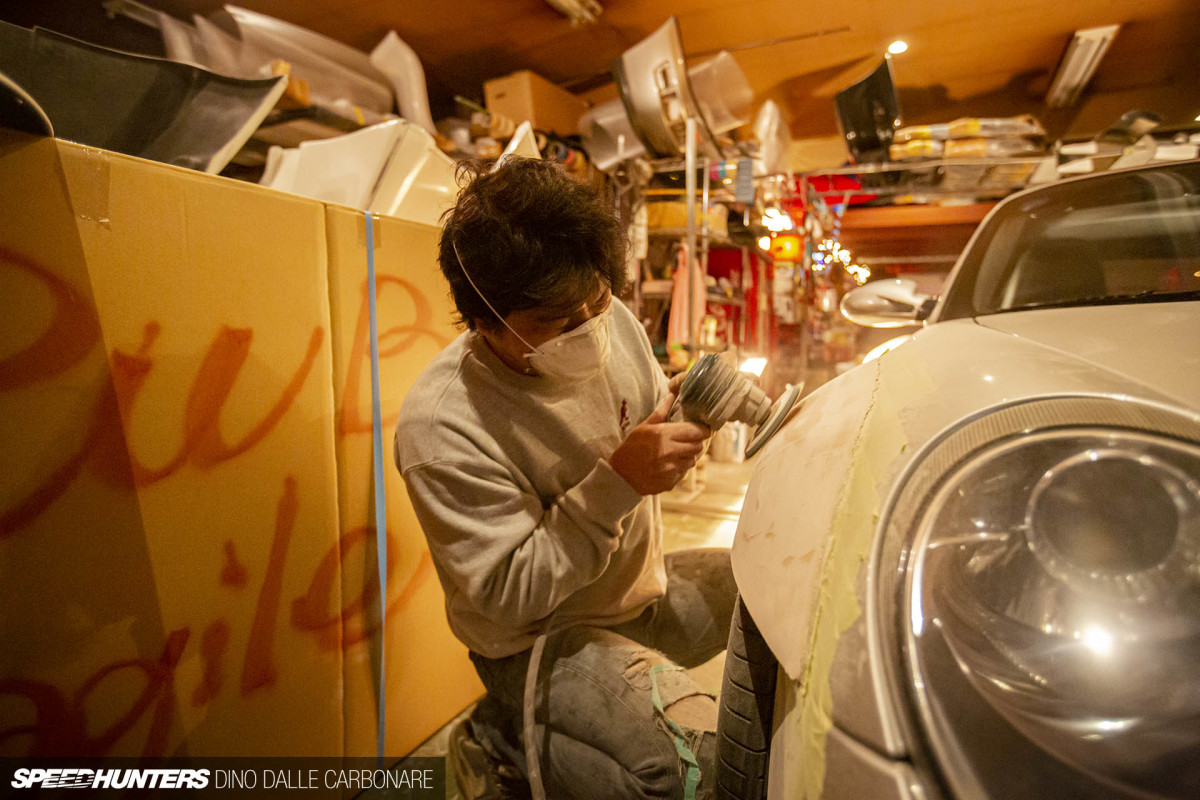
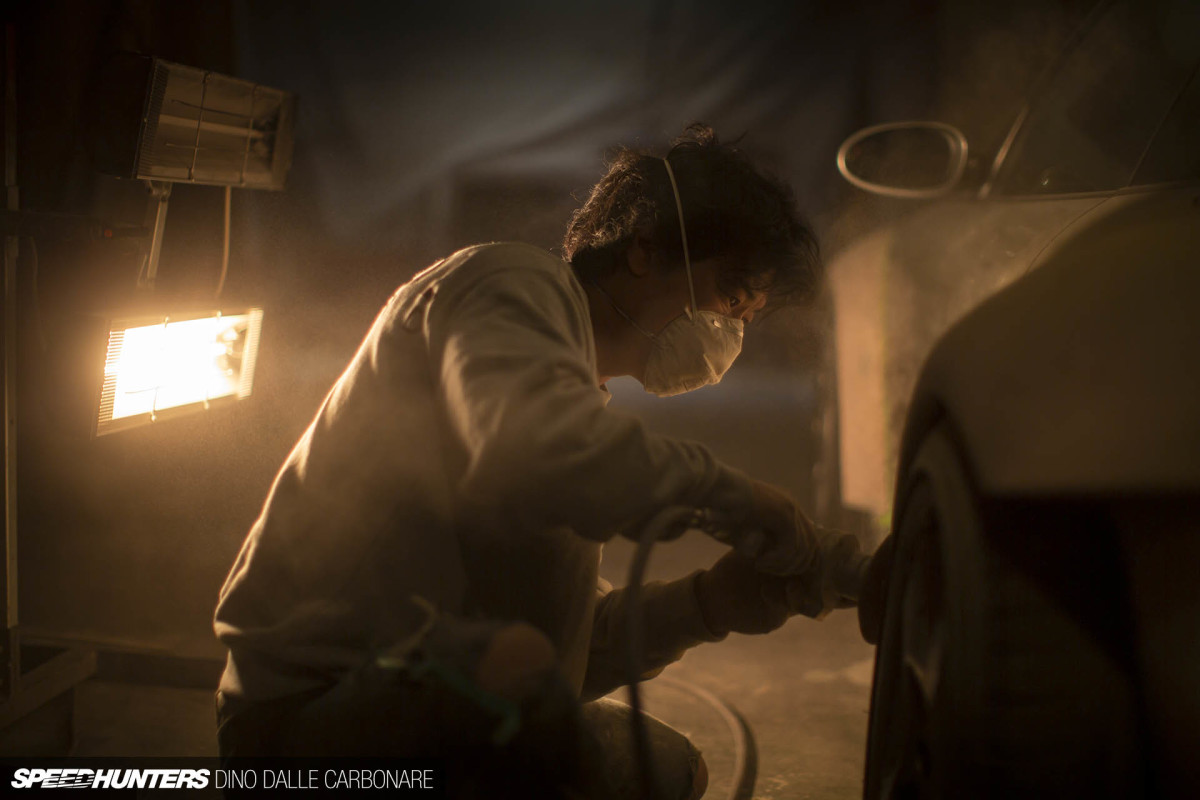
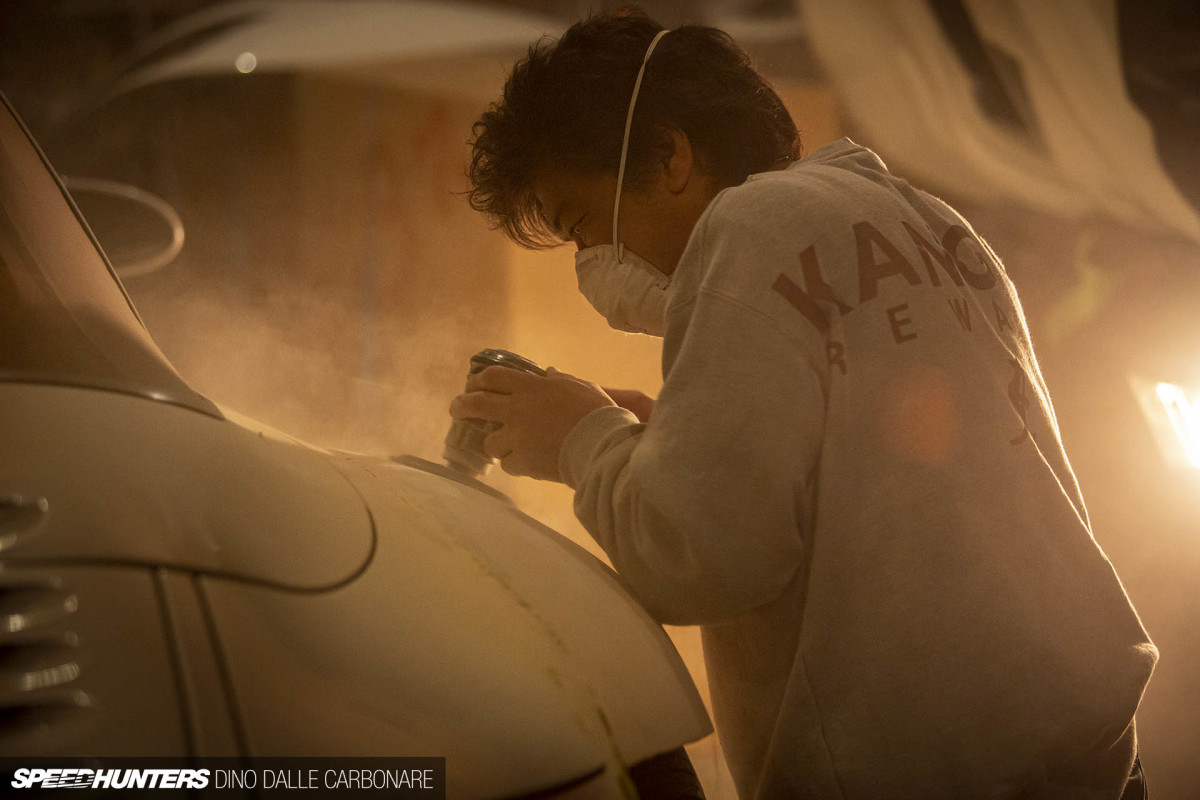

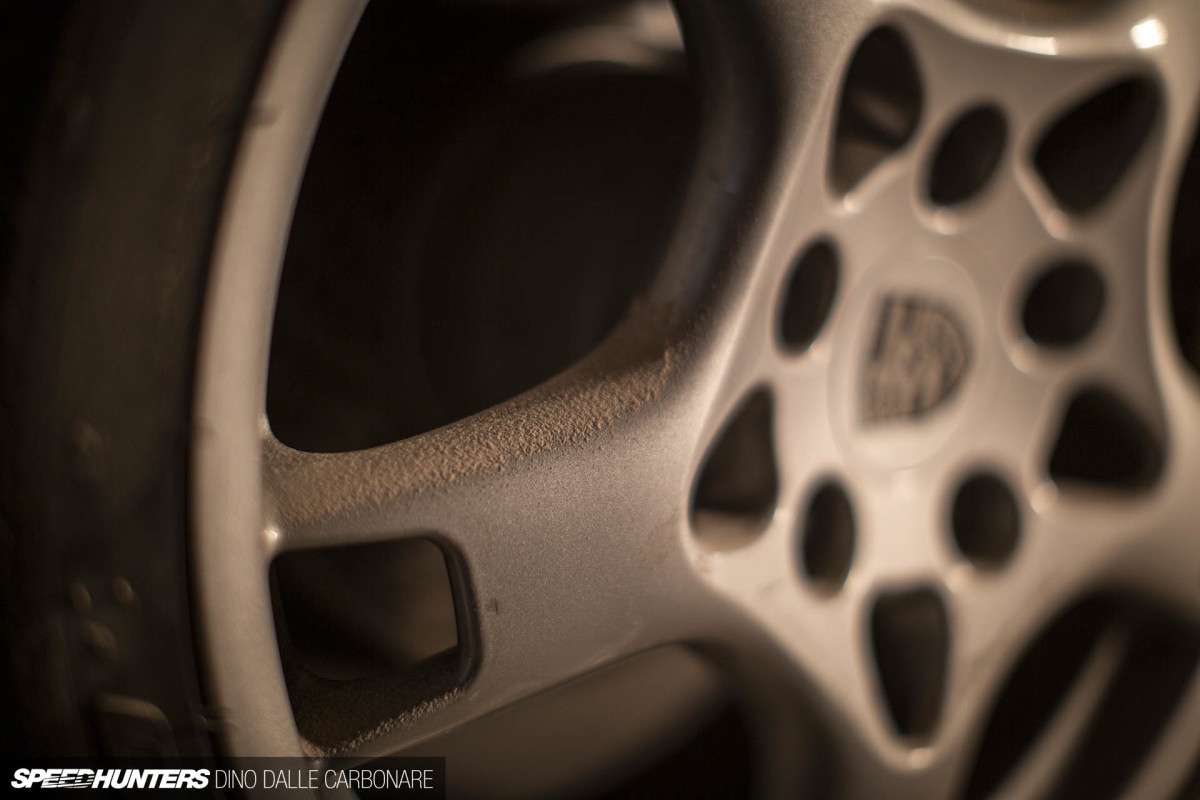





ah man, what a treat to see this progress. I can't wait to see the final part.
Little bit off topic: I used to visit a body shop who casually restores old metal to its glory days and i could feel what you were trying to describe here, it's always nice to see an "artist" sanding down body-filler and feel the waves of the non-smooth curvatures with his finger tips and then continue refining his work.
Back to the article: I didn't expect it to be that much tight fitment while reading the 1st part. Waiting for part 3, please consider not taking your time.
LOL good things are worth the wait
Butchering real Porsches
Nakai-san should consider using an orbiter sander with a dust collecting bag. For health consideration, and ease of clean-up after work.
Agree there.
He is a strong smoker and also breaths this stuff, he must live long.
good to see nakai-san wear a mask
was fortunate enough to see him work on a build few years back in person and what amazed most, other than obvious artistry, was that he is a living chimney of cigs and every other toxin around a car. got him a pack of local cigs as a gift. in hindsight maybe a pack of N95's would be more appropriate
I was the one without a mask in there. It was horrible, I literally had to take a deep breath, move into the dust area and then after a few shots go and grab a breath of fresh air.
maybe I'll get you a pack of N95's instead =P
haha
I am curious to see the final product myself. Reading these articles on the build piqued my interest in how Nakai-san goes about building these machines.
Working on the story...
I'm eagerly waiting to see the new RWB 997
A classic in the making!
and this is the type of stuff that should be shown.
DIY car culture is considered old timer stuff now but.
DIY will always trump buying out of a catalog.
Not sure I'd consider this DIY? Do you mean actual hand built stuff/fabrication? As opposed to bolt on stuff off a catalogue?
I think the "debate" here is the origins of the model: is it hand built or CAD generated.
As you have already explained in the 1st part Dino, this process is not very frequent it's only for new models/new body kits; later on, a moulded body kit will be "slapped on" the car which can be considered more or less out of a catalogue with minor tweaks.
CAD designs are more time and cost effective but there is a reason why big car manufacturers still use the clay designs in their process of building a new car.
I think you are confusing one-of's and mass produced.
Depending on the part in question of course, it generally isn't worth the time to make a CAD model of something unless you intend to reproduce it, or want to engineer the part. If it's a one-of custom part, some back of the napkin math and a sketch before fabricating it is often quite sufficient. If you are mass producing it, it pays to have a CAD model to reference back to or distribute to whomever is manufacturing it, and depending on the investment involved in mass producing, testing a part in virtual is a no brainer before you spend anywhere between thousands to hundreds of thousands of €/$/£ on tooling.
In the case of clay models, the reason is that it is a lot easier to sculpt an object and modify it with clay, then digitise it into a CAD model compared to modelling all the complex curves and geometry from scratch in a virtual enviroment. Not to mention it is hard to get a sense of a vehicles "presence" when just looking at it through a screen.
Man you just expanded my point, I'm not confusing anything here. As you said "it is hard to get a sense of a vehicles "presence" when just looking at it through a screen". Nothing can beat the real deal it's all about senses involvement (that's why a lot of us hates EV Motorsports) but sure the CAD designs are more cost and time effective in a lot of cases and the physical fabrication is no way justified; and if you add some CFD to the equation the digital world will be no brainer.
Yeah totally agree. Plus the way he finishes off the cars himself adds to it. I would really love to see him play around with steel though, english wheel, hammers and so on to create a top of the line conversion for the pickiest of the picky.
It has been like 2 years. I think you can get rid of the "STORE" button at the top that leads to nowhere.
Whoever thinks this isn't tough should try it themselves. Those tiny imperfections in every kit caused by the human process are a sign that the pattern was made by a person, and not a machine.
PERFECTION REQUIRES PATIENCE
And mistakes. Experimentation. Revisions. But who has patience these days? Let's 3D print everything lol
Damt... I want to work on my sheet metal stuff after reading/looking at this article. I hope spring is coming soon and I could tinker in the garage not freezing to death, haha! Thanks for the inspiration, Dino!
You need a JDM kerosene space heater for your garage lol
some may find my comment offensive but:
it is like waking up in the morning after you cut the metal fenders of all the old air cooled porsches, those left are in hands of purist and wise people so now you have nothing todo..... ah but you can still cut the metal of the water cooled once for fiber glass, i wonder how much regret will their owners have in the future.
I got your point here but if everyone thinks like this then all cars will remain stock and you have no car culture. Your problem brother resides with the guys destroying these classics only because it's a popular thing to bolt on some over-fenders. From my side i partially agree with you since i have no problem if the mods, even non-reversible, are for improving the car (in this car accommodate wider track) I'm only again mods destroying the car let it be excessive camber, huge wheels with no side walls, body scrapping the floor,... Even that i appreciate a well executed low rider for example, I'll never do it myself.
Funny, no eywear whatsoever, but at least he wears a mask when grinding down those flares..